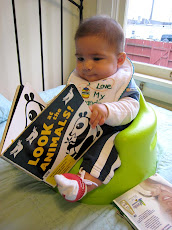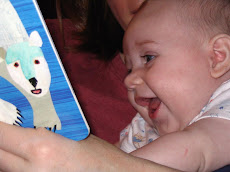
Here is an interesting story...
The Little Boy Adapted from Helen E. BuckleyOnce a little boy went to school. He was quite a little boy and it was quite a big school.
One morning, when the little boy had been in school a while the teacher said, "Today we are going to make a picture". The little boy was happy. He liked to make pictures. He could make all kinds: lions and tigers, chickens and cows, trains and boats. He took out his box of crayons and he began to draw.
But the teacher said, "Wait, it is not time to begin" and she waited until everyone looked ready. "Now", said the teacher, "We are going to make flowers". The little boy was happy. He liked to make flowers so he began to make beautiful ones with his pink, orange and blue crayons.
But the teacher said "Wait, I will show you how." She drew a flower on the board. It was red, with a green stem. "There, now you may begin", said the teacher.
The little boy looked at the teacher's flower, then he looked at his own flower. He liked his flower better than the teacher's, but he did not say anything. He just turned his paper over and made a flower like the teacher's. It was red with a green stem.
On another day, the teacher said, "Today we are going to make something with clay". The little boy was happy. He liked clay. He could make all kinds of things with clay: snakes and snowmen, elephants and mice, cars and trucks. He began to pull and pinch his ball of clay.
But the teacher said, "Wait, it is not time to begin". She waited until everyone looked ready. "Now, we are going to make a dish," said the teacher. The little boy was happy. He liked to make dishes. He began to make some that were all shapes and sizes.
But the teacher said, "Wait, I will show you how". She showed everyone how to make one deep dish. "There, now you may begin," said the teacher.
The little boy looked at the teacher's dish. Then he looked at his own dish. He liked his better than the teacher's, but he did not say anything. He just rolled his clay into a big ball again and made a dish like the teacher's. It was a deep dish.
Pretty soon the little boy learned to wait, to watch, and to make things just like the teacher.
Then, it happened that the boy's family moved to another city. On the first day at his new school, the teacher said, "Today we are going to make a picture." The boy thought about how much fun it would be to draw a picture, and he waited.
The teacher didn't say anything. She just walked around the room. When she came to the little boy, she asked him if he wanted to draw a picture. He said yes and asked her what he should draw. She said he could draw anything he wanted to. He asked her what colour he should use. She said he could use any colour he wanted to.
The little boy looked at his blank paper and thought hard for several moments. Then, he picked up his crayons and started to draw.
Can you guess what he drew?For more information on children and creativity, please visit:
Children and CreativityProcess, Not Product






















































